Seid Miad Zandavi
A Fast Parallel Tensor Decomposition with Optimal Stochastic Gradient Descent: an Application in Structural Damage Identification
Nov 04, 2021



Abstract:Structural Health Monitoring (SHM) provides an economic approach which aims to enhance understanding the behavior of structures by continuously collects data through multiple networked sensors attached to the structure. This data is then utilized to gain insight into the health of a structure and make timely and economic decisions about its maintenance. The generated SHM sensing data is non-stationary and exists in a correlated multi-way form which makes the batch/off-line learning and standard two-way matrix analysis unable to capture all of these correlations and relationships. In this sense, the online tensor data analysis has become an essential tool for capturing underlying structures in higher-order datasets stored in a tensor $\mathcal{X} \in \mathbb{R} ^{I_1 \times \dots \times I_N} $. The CANDECOMP/PARAFAC (CP) decomposition has been extensively studied and applied to approximate X by N loading matrices A(1), . . . ,A(N) where N represents the order of the tensor. We propose a novel algorithm, FP-CPD, to parallelize the CANDECOMP/PARAFAC (CP) decomposition of a tensor $\mathcal{X} \in \mathbb{R} ^{I_1 \times \dots \times I_N} $. Our approach is based on stochastic gradient descent (SGD) algorithm which allows us to parallelize the learning process and it is very useful in online setting since it updates $\mathcal{X}^{t+1}$ in one single step. Our SGD algorithm is augmented with Nesterov's Accelerated Gradient (NAG) and perturbation methods to accelerate and guarantee convergence. The experimental results using laboratory-based and real-life structural datasets indicate fast convergence and good scalability.
PIDA: Smooth and Stable Flight Using Stochastic Dual Simplex Algorithm and Genetic Filter
Jun 17, 2020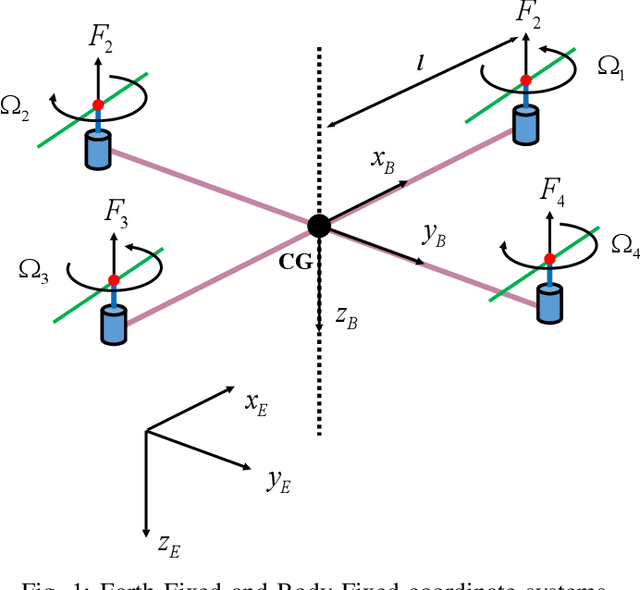
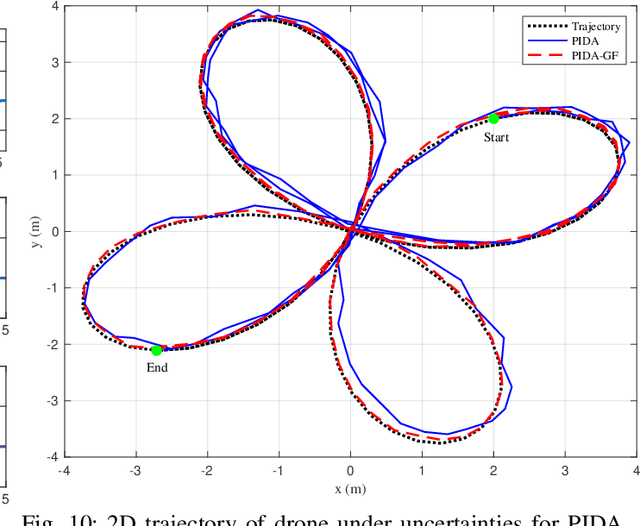
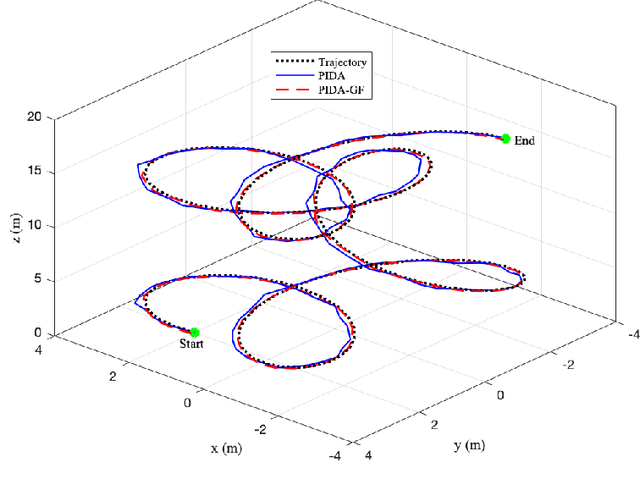

Abstract:This paper presents a new Proportional-Integral-Derivative-Accelerated (PIDA) control with a derivative filter to improve quadcopter flight stability in a noisy environment. The mathematical model is derived from having an accurate model with a high level of fidelity by addressing the problems of non-linearity, uncertainties, and coupling. These uncertainties and measurement noises cause instability in flight and automatic hovering. The proposed controller associated with a heuristic Genetic Filter (GF) addresses these challenges. The tuning of the proposed PIDA controller associated with the objective of controlling is performed by Stochastic Dual Simplex Algorithm (SDSA). GF is applied to the PIDA control to estimate the observed states and parameters of quadcopters in both attitude and altitude. The simulation results show that the proposed control associated with GF has a strong ability to track the desired point in the presence of disturbances.
Forecasting the Spread of Covid-19 Under Control Scenarios Using LSTM and Dynamic Behavioral Models
May 24, 2020



Abstract:To accurately predict the regional spread of Covid-19 infection, this study proposes a novel hybrid model which combines a Long short-term memory (LSTM) artificial recurrent neural network with dynamic behavioral models. Several factors and control strategies affect the virus spread, and the uncertainty arisen from confounding variables underlying the spread of the Covid-19 infection is substantial. The proposed model considers the effect of multiple factors to enhance the accuracy in predicting the number of cases and deaths across the top ten most-affected countries and Australia. The results show that the proposed model closely replicates test data. It not only provides accurate predictions but also estimates the daily behavior of the system under uncertainty. The hybrid model outperforms the LSTM model accounting for limited available data. The parameters of the hybrid models were optimized using a genetic algorithm for each country to improve the prediction power while considering regional properties. Since the proposed model can accurately predict Covid-19 spread under consideration of containment policies, is capable of being used for policy assessment, planning and decision-making.
Control Design of Autonomous Drone Using Deep Learning Based Image Understanding Techniques
Apr 28, 2020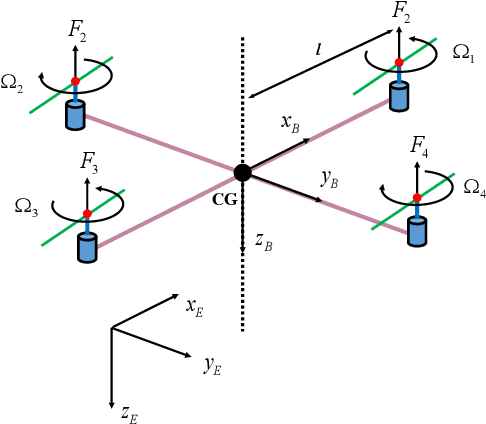
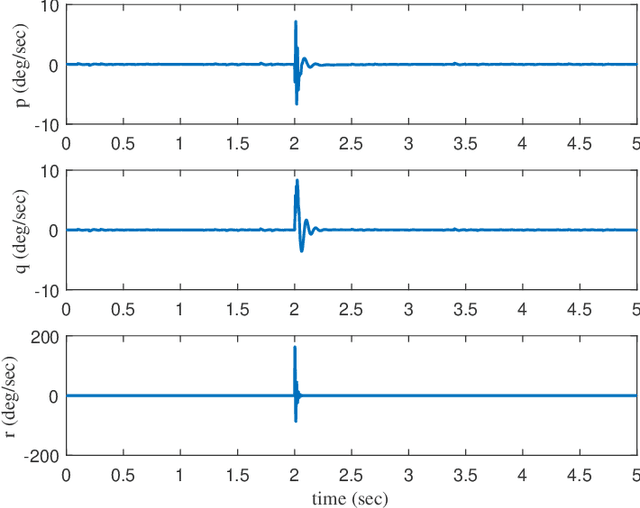
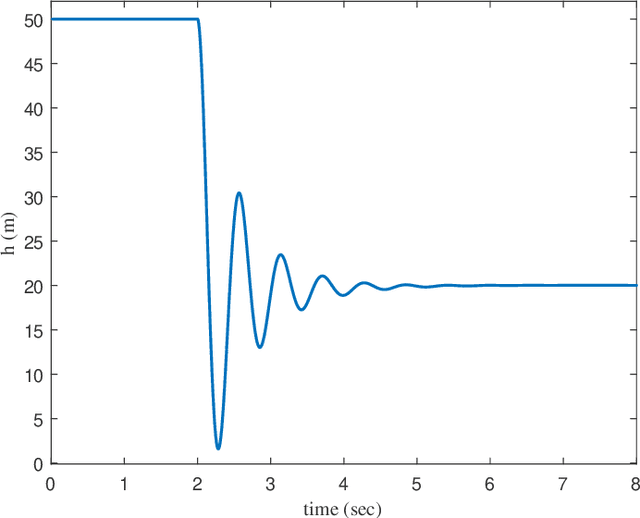
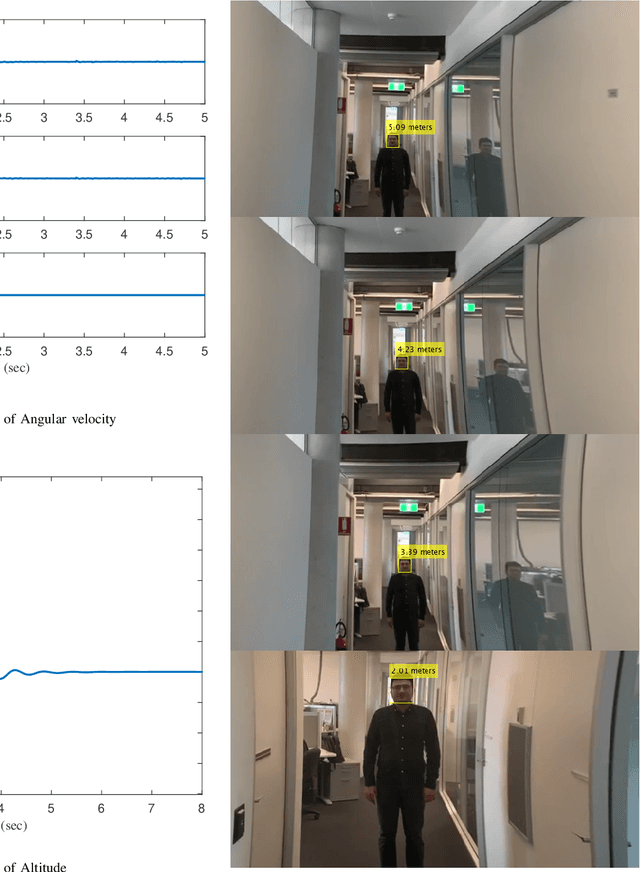
Abstract:This paper presents a new framework to use images as the inputs for the controller to have autonomous flight, considering the noisy indoor environment and uncertainties. A new Proportional-Integral-Derivative-Accelerated (PIDA) control with a derivative filter is proposed to improves drone/quadcopter flight stability within a noisy environment and enables autonomous flight using object and depth detection techniques. The mathematical model is derived from an accurate model with a high level of fidelity by addressing the problems of non-linearity, uncertainties, and coupling. The proposed PIDA controller is tuned by Stochastic Dual Simplex Algorithm (SDSA) to support autonomous flight. The simulation results show that adapting the deep learning-based image understanding techniques (RetinaNet ant colony detection and PSMNet) to the proposed controller can enable the generation and tracking of the desired point in the presence of environmental disturbances.
Multi-User Remote lab: Timetable Scheduling Using Simplex Nondominated Sorting Genetic Algorithm
Mar 26, 2020



Abstract:The scheduling of multi-user remote laboratories is modeled as a multimodal function for the proposed optimization algorithm. The hybrid optimization algorithm, hybridization of the Nelder-Mead Simplex algorithm and Non-dominated Sorting Genetic Algorithm (NSGA), is proposed to optimize the timetable problem for the remote laboratories to coordinate shared access. The proposed algorithm utilizes the Simplex algorithm in terms of exploration, and NSGA for sorting local optimum points with consideration of potential areas. The proposed algorithm is applied to difficult nonlinear continuous multimodal functions, and its performance is compared with hybrid Simplex Particle Swarm Optimization, Simplex Genetic Algorithm, and other heuristic algorithms.
NeCPD: An Online Tensor Decomposition with Optimal Stochastic Gradient Descent
Mar 18, 2020



Abstract:Multi-way data analysis has become an essential tool for capturing underlying structures in higher-order datasets stored in tensor $\mathcal{X} \in \mathbb{R} ^{I_1 \times \dots \times I_N} $. $CANDECOMP/PARAFAC$ (CP) decomposition has been extensively studied and applied to approximate $\mathcal{X}$ by $N$ loading matrices $A^{(1)}, \dots, A^{(N)}$ where $N$ represents the order of the tensor. We propose a new efficient CP decomposition solver named NeCPD for non-convex problem in multi-way online data based on stochastic gradient descent (SGD) algorithm. SGD is very useful in online setting since it allows us to update $\mathcal{X}^{(t+1)}$ in one single step. In terms of global convergence, it is well known that SGD stuck in many saddle points when it deals with non-convex problems. We study the Hessian matrix to identify theses saddle points, and then try to escape them using the perturbation approach which adds little noise to the gradient update step. We further apply Nesterov's Accelerated Gradient (NAG) method in SGD algorithm to optimally accelerate the convergence rate and compensate Hessian computational delay time per epoch. Experimental evaluation in the field of structural health monitoring using laboratory-based and real-life structural datasets show that our method provides more accurate results compared with existing online tensor analysis methods.
Multi-Objective Variational Autoencoder: an Application for Smart Infrastructure Maintenance
Mar 11, 2020



Abstract:Multi-way data analysis has become an essential tool for capturing underlying structures in higher-order data sets where standard two-way analysis techniques often fail to discover the hidden correlations between variables in multi-way data. We propose a multi-objective variational autoencoder (MVA) method for smart infrastructure damage detection and diagnosis in multi-way sensing data based on the reconstruction probability of autoencoder deep neural network (ADNN). Our method fuses data from multiple sensors in one ADNN at which informative features are being extracted and utilized for damage identification. It generates probabilistic anomaly scores to detect damage, asses its severity and further localize it via a new localization layer introduced in the ADNN. We evaluated our method on multi-way datasets in the area of structural health monitoring for damage diagnosis purposes. The data was collected from our deployed data acquisition system on a cable-stayed bridge in Western Sydney and from a laboratory based building structure obtained from Los Alamos National Laboratory (LANL). Experimental results show that the proposed method can accurately detect structural damage. It was also able to estimate the different levels of damage severity, and capture damage locations in an unsupervised aspect. Compared to the state-of-the-art approaches, our proposed method shows better performance in terms of damage detection and localization.
Online Tensor-Based Learning for Multi-Way Data
Mar 10, 2020



Abstract:The online analysis of multi-way data stored in a tensor $\mathcal{X} \in \mathbb{R} ^{I_1 \times \dots \times I_N} $ has become an essential tool for capturing the underlying structures and extracting the sensitive features which can be used to learn a predictive model. However, data distributions often evolve with time and a current predictive model may not be sufficiently representative in the future. Therefore, incrementally updating the tensor-based features and model coefficients are required in such situations. A new efficient tensor-based feature extraction, named NeSGD, is proposed for online $CANDECOMP/PARAFAC$ (CP) decomposition. According to the new features obtained from the resultant matrices of NeSGD, a new criteria is triggered for the updated process of the online predictive model. Experimental evaluation in the field of structural health monitoring using laboratory-based and real-life structural datasets show that our methods provide more accurate results compared with existing online tensor analysis and model learning. The results showed that the proposed methods significantly improved the classification error rates, were able to assimilate the changes in the positive data distribution over time, and maintained a high predictive accuracy in all case studies.
 Add to Chrome
Add to Chrome Add to Firefox
Add to Firefox Add to Edge
Add to Edge